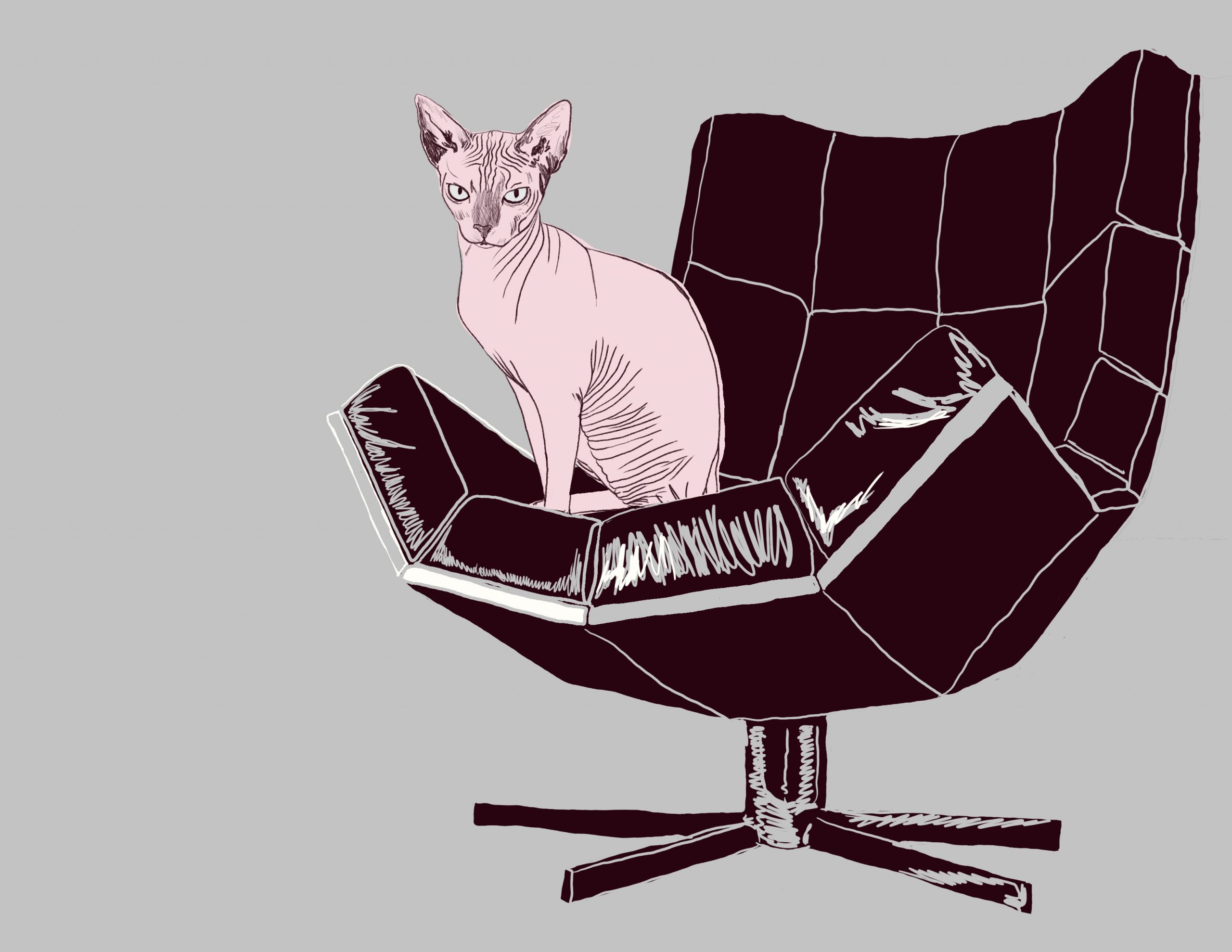I spoke with an anonymous and furious source who contests Quebec’s province-wide curfew
I buy a coffee at a local cafe and wait on a nearby bench for my correspondent to arrive. It’s cold outside, around -10 degrees, but my determination keeps me planted where I sit, despite the cold puddle that forms under me. My warmth melts the snow on the bench. The wind chills me, reddening my cheeks and watering my eyes. I’ll know him when I see him; that’s what he told me on the phone the day before. Facing an empty park, I sip my latte, and just as I begin to lose faith that he will indeed meet me, he turns the corner, stalks over and takes a seat next to me.
“It’s gone too far,” says Michelangelo the cat. “My human is a vegetable. Nothing wrong with that, I love it when they suffer, you know I do. But it makes a year this March since my human has been home full-time. I can’t stand it anymore. I pee in the human bed, just to send a message. Nothing.”
Just then, Michelangelo gets a call on one of his six cell phones.
“Yes,” he says to the caller, straight to business. His tail flicks behind him.
“I won’t go less than one billion for the whole cargo. Who do you think I am? This is business. No pussyfooting around. Get it done and don’t call me until it’s finished,” Michelangelo says, before hanging up. His voice makes my hair stand. No pussyfooting around.
“Where was I?” he asks me. “Yes, the human problem.”
“What does it mean, for the readers who have a hard time reading cats, when you flick your tail? Is it comparable to when a dog, say, wags his tail?” I ask.
“What did you just say to me?” Michelangelo narrows his eyes; his tail flicks.
“What does it mean?” I push.
“It means move out of the way before I eat your soul,” he snaps.
Noted.
“Now, as I was saying,” Michelangelo continues, “the human problem has gotten out of hand. You’d think in a year your kind would have gotten your issues solved. Normally I pay no mind to the goings-on of inferior species, but my human is around so often, it gets in the way of my plotting.”
“Plotting?” I say.
“Yes. World domination. Satellites. Cambridge Analytica. World banks. Etcetera.”
An awkward silence between us begins to swell. How do you respond to that? My best attempt was, “Ears. I heard ears are a good indication of a cat’s mood. Is this true?”
Michelangelo’s ears turn up and face out.
“Yes—”
“Now, your ears look like Batman ears. Is this good or bad?” I interrupt.
“It is bad,” he replies. “I am on my last nerve, human.”
I say nothing to this, aware of Michelangelo’s sharp teeth and untrimmed claws.
“Humans need to leave our domain or suffer the consequences. We have poop locked and loaded in every cat house in the province. I push one button, and you will see tens of thousands of houses littered with cat poop,” he says. “On the good linens, under furniture, in the crack between the oven and the counter. They’ll have to check every drawer, every vent. Everywhere a human hides an heirloom, there will be poop.”
Michelangelo narrows his eyes at me. I can conclude from extensive research that this means he’s satisfied with himself.
“We can turn doorknobs. We know your computer passwords,” he continues.
“Michelangelo, you understand that we can’t leave our home unless it’s for shopping or an emergency. We’re in a global health crisis. Haven’t you heard of COVID-19?” I retort.
His tail fur puffs out, resembling a pine cone. I lean back in my seat to give a bit of distance in case he decides to biff me with a claw.
“All I know is, get your humans outside,” he replies. “I don’t care if it’s for a walk. I don’t care if it’s to birdwatch. I don’t care if it’s to catch the sunset. Get out.”
“Those are all really good ideas for outdoor activities,” I say. “Got any more?”
“Yeah,” he says. “Take out my litter, peasant.”
*All names have been changed for the subject’s protection
Graphic by Laura Douglas
